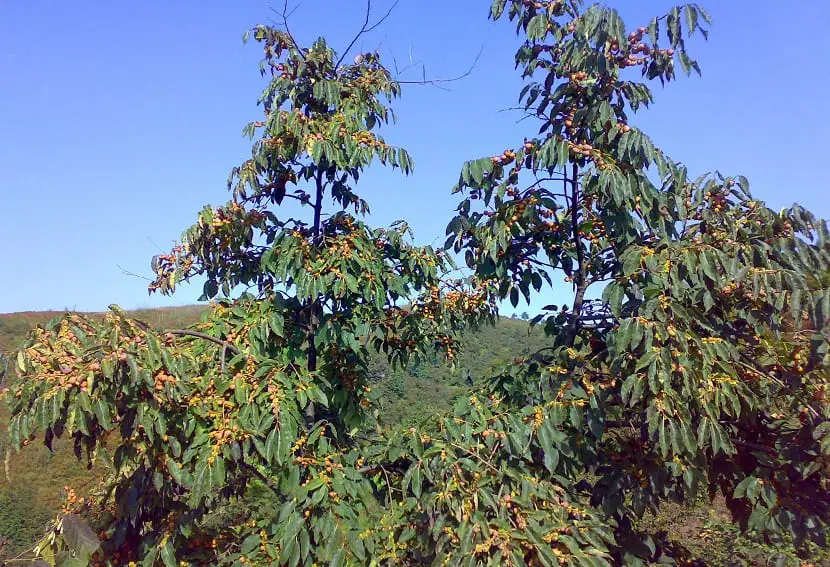
The Diospyros Lotus is a deciduous tree, which belongs to the family ebanaceae. Commonly known as wild persimmon. It is an elegant ornamental plant that preserves its branches for a long time. It is a rich source of nutrients for birds in the winter season and its flowering occurs during the month of July; while its seeds ripen between October and November.
Origin and habitat

It is a species native to East Asiain countries like China and Japan. It can also be found in the western regions of Europe, it also grows in temperate climates.
Characteristics of the Diospyros Lotus
The Diospyros Lotus It is a deciduous tree, quite resistant that can reach 6 meters in height. It has a strong and striated barkbrown branches. Its leaves are elongated, oblong, dark green, shiny on the upper side and with smooth edges, they can be up to 15 centimeters long, during autumn they acquire a yellow hue, they are alternate and have a smooth texture.
Its flowering appears in the month of June, when it presents small green to reddish flowers. The female leaves give off an unpleasant odor. Its fruits are edible and they have a size similar to large cherries, yellow in color that turns very dark blue when they fully mature, they are about 20 mm in diameter, they reach maturity between the months of October and November, they have a sweet and pleasant taste when it is fully mature.
Plantation
This plant needs clay soils, in full sun or semi shaded. If you plan to grow it for its fruit, you should plant in a warm, sunny location. This plant does not tolerate too acidic soilshumid and with poor drainage. Established plants are resistant to cold, the same does not happen with the younger and mature ones, which are sensitive to frost.
Its unfertilized fruits may be more astringent than fertilized ones. The root has long ramifications and they are difficult to transplant, so it is recommended to plant it as soon as possible in its final position and ensure its protection during the winter season for one or two years. It begins to produce fruit around the age of 6.
This species can be propagated by seeds and by cuttings. If you decide on its multiplication by seeds, sow in the middle of cold weather as soon as it is ripe. With regard to stored seeds, you should always keep in mind that these need a period of stratification cold and cultivated as soon as possible. They usually germinate after one to six months at a temperature of 15ºC.
Make sure the youngest seedlings are large enough to be handled by hand and then place them in deep pots and the plants in their final positions in early summer. Protect them from the winter cold at least for his first year or two out in the open. If you want to propagate by wood cuttings, it is recommended to do it between the months of July and August in a warmer setting.
Uses
In some European countries it is grown to take advantage of its fruits, which are very durable. This species has medicinal propertiesso its fruit is used as an antipyretic, also to promote secretions. Its seeds are used as sedatives in China. Because it has a durable and rot-resistant wood, it is used in construction and carpentry.
Diseases and pests

It is a plant susceptible to the attack of various annoyances and pestssuch as; gray mold, wood decay, the mushroom and leaf spots among other fungal diseases. These conditions can cause leaves to wilt, lose color, and even fall off the tree prematurely.
Usually, these diseases can be controlled through the use of fungicides, however it is recommended to take preventive measures to keep pests and diseases away. Some of the measures that you can apply are to keep the soil in the vicinity of the plant clean and free of debris, plant in well-drained soil, prune the branches and allow air flow through the canopy.

